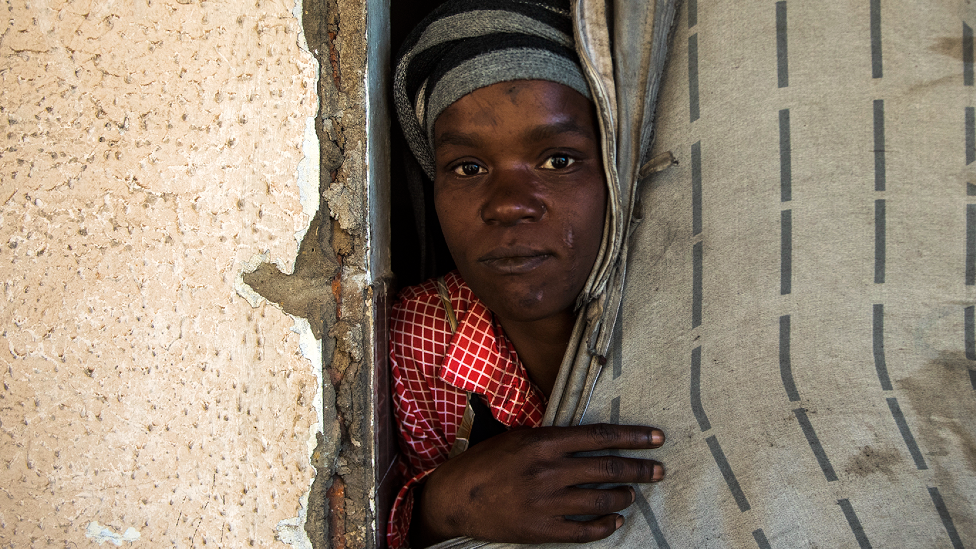South Africa fire: What are Johannesburg's hijacked buildings?
- Published

Many buildings in the centre of the South African city of Johannesburg, where a horrific fire has killed more than 70 people, are deemed unfit to live in.
Yet these old blocks, abandoned by their owners or the city authorities, are full of families often paying rent to criminal gangs who run them.
The buildings, which lack running water, toilets or a legal electricity connection, are then said to have been "hijacked".
Scores of people often live in one room, often former offices. Fires are common - though nothing on the scale of the one that went up in flames overnight.
A firefighter at the scene of the five-storey building, in an area called Marshalltown, said many shack-like structures had been erected inside - making things even more combustible.
People tend to cook on paraffin stoves and during the cold winter months - June to September - fires are often lit in large metal drums with wood and other scavenged items thrown in for fuel.
Candles are often used and the numerous illegal electricity connections rigged up to provide power for those inside also pose a fire hazard. It is common to see satellite dishes hanging by windows.
One person who escaped the recent inferno told the BBC the fire had started during a power cut - which happen frequently throughout the country.
She said the cut in the electricity supply triggered a bunch of gunshot-like sounds followed by a massive explosion.
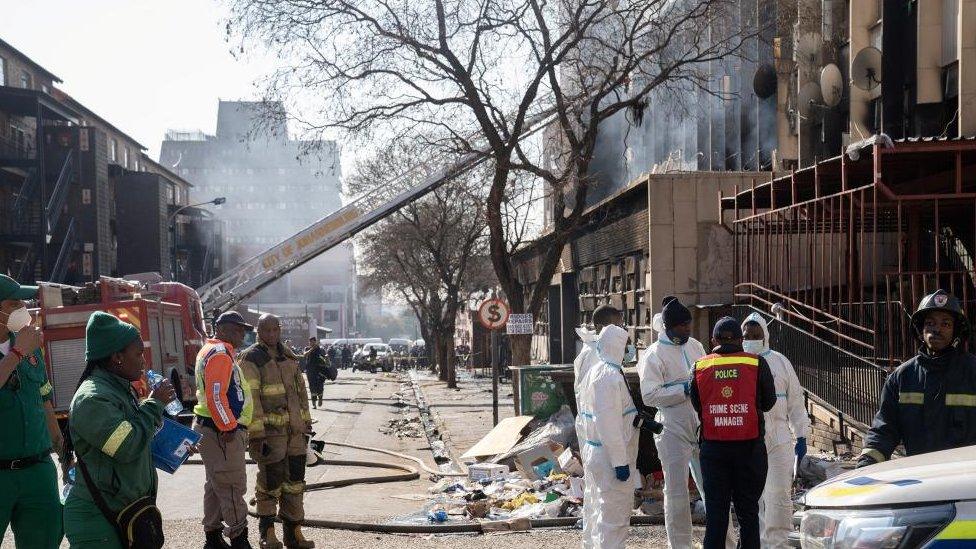
The fire broke out in the five-storey building overnight
The woman asked not to be named - this is because the occupants of these buildings are there illegally, and they tend to shun the authorities and media.
Two years ago, photographer Shiraaz Mohamed gained the trust of some residents of an infamous building in Johannesburg's Hillbrow area - and published a piece on the BBC about their lives.
They told him about the unsanitary conditions - the smell of faeces permeating the corridors as occupants relieved themselves in the building's empty spaces or sometimes on the pavement.
Those living there, who did their best to keep their own areas clean, were a mix of poor South Africans as well as migrants from across Africa - some of whom lack documents and are in the country illegally.
The city centre of Johannesburg is a dangerous place to be - with high levels of crime. It is still referred to as the Central Business District (CBD), though many businesses have long fled.
This happened around the time that white-minority rule ended in 1994. During apartheid, the government imposed strict racial segregation of cities - pushing black and mixed-raced communities into townships outside.
In fact 80 Albert Street, the site of the blaze, opened in 1954 as the office of the Non-European Affairs Department, where black South Africans went to collect a passbook, known as a "dompas", that controlled where they could travel. There is a blue heritage plaque at its entrance marking the historical significance of the building.
When apartheid was dismantled, those who had been pushed to the edges of cities could move in. Poor people looking for affordable housing moved close to where they worked to avoid high transport costs.
With some businesses and wealthier residents of the CBD moving to the more affluent northern suburbs, including the Johannesburg Stock Exchange, old commercial buildings in the city centre were turned into low-rent apartments.
The building which has burnt down was later turned into the Usindiso Women's Shelter before it fell into disuse and was taken over by criminal gangs.
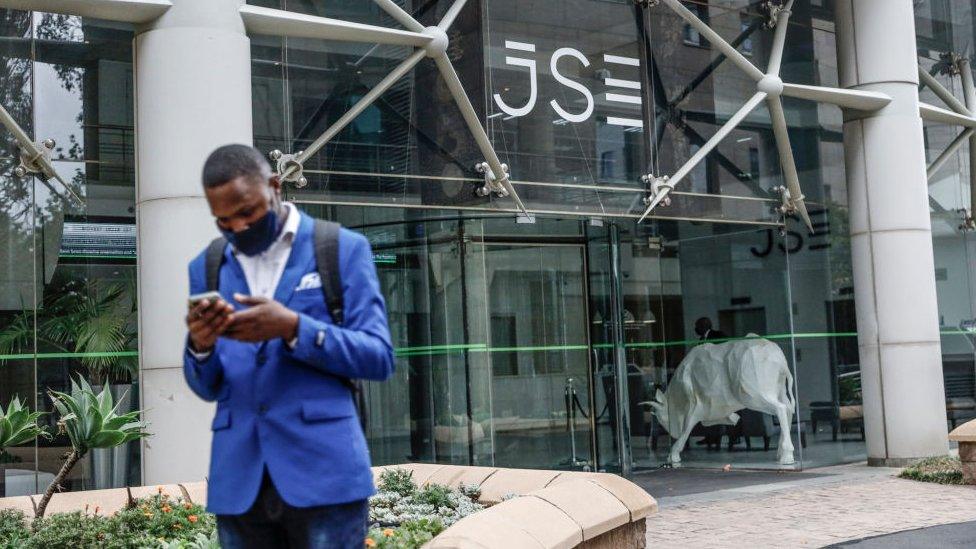
Africa's largest stock exchange moved to Sandton in northern Johannesburg in 2000 from the city centre
The newly liberated country also attracted migrants, some fortune-seekers, some refugees - many of whom settled in this cheap housing in the city centre.
South Africa faced and still faces a critical housing shortage - a legacy of apartheid and one of the governing African National Congress's greatest challenges.
The country remains one of the most divided and unequal societies in the world.
In Johannesburg, the country's largest city, 15,000 people were estimated to be homeless earlier this year, the provincial department told fact-checking website Africa Check.
Following the exodus of businesses, the CBD became a no-go area with a reputation for crime and violence, and some buildings were reportedly abandoned by owners as rates owed to the council exceeded their value.
Johannesburg city authorities began efforts to rejuvenate things more than a decade ago. They declared buildings unfit for human habitation and - often after court cases - rehoused some of the residents.
By law property owners must offer a building's occupants alternative accommodation before evicting them, even if they are undocumented migrants.
Some parts of the CBD have been redeveloped - with private investment.
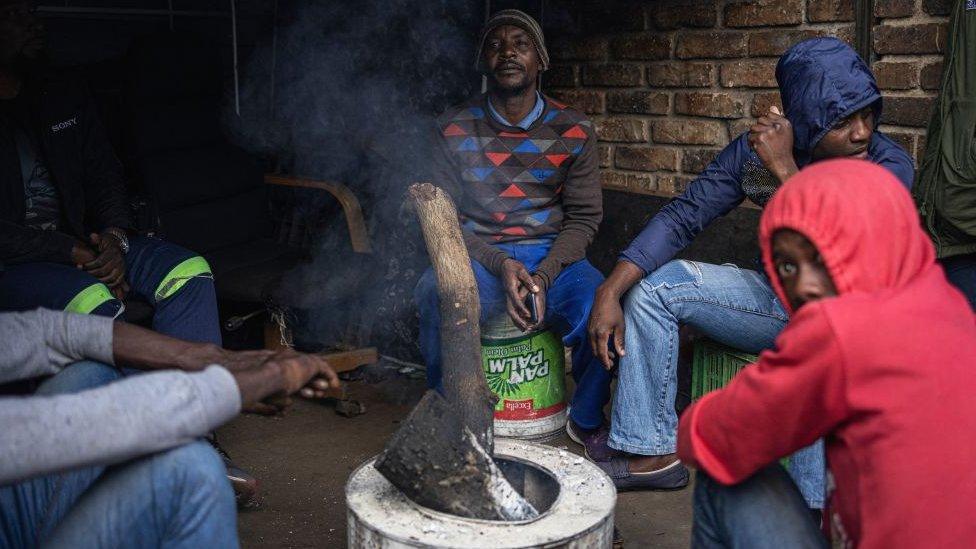
Those living in derelict hijacked buildings often light fires in drums to keep warm
Yet as derelict buildings proliferated - some owned by the council and tied up in legal wrangles - criminal syndicates spotted an opening to make money, further exploiting those desperate for accommodation.
The rent can be fairly high - but these kind of landlords overlook a bad credit history or the fact that the tenants have no official documents.
It is a tough life for those living in a hijacked building. Drugs and addiction proliferate - and outsiders are at risk when they venture in.
Yet for the occupants, when they open up about their lives, it is clear the abandoned buildings offer a roof over their heads and a chance to dream of a better future.
Related topics
- Published31 August 2023
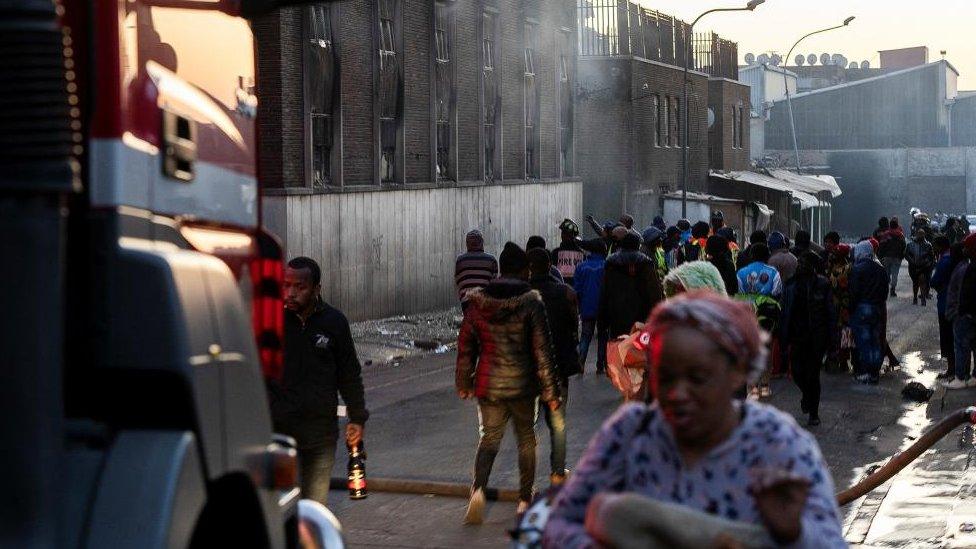
- Published6 September 2021
